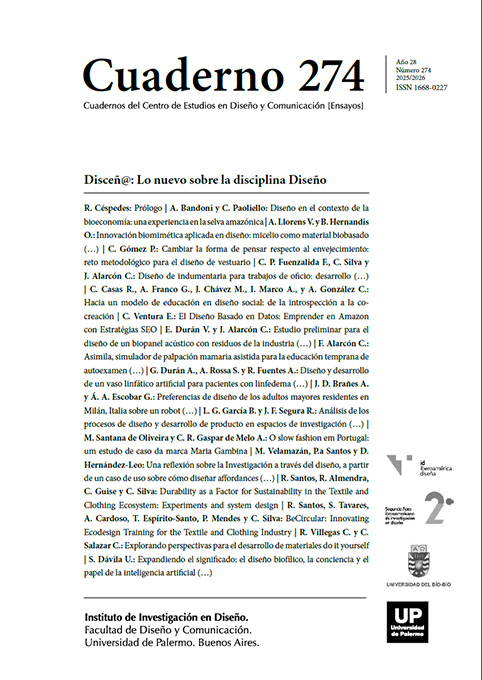Expandiendo el significado: el diseño biofílico, la conciencia y el papel de la inteligencia artificial en la transformación ontológica
Abstract
In the contemporary era, design has evolved from a discipline focused on the industrial production of tangible objects to encompass the creation of services, digital experiences, and complex systems.
References
Barsalou, L. W. (2008). Grounded cognition. Annual Review of Psychology, 59, 617- 645. https://doi.org/10.1146/annurev.psych.59.103006.093639
Butler, J. (1990). Gender trouble: Feminism and the subversion of identity. Routledge.
Butter, K. (2023) Pollino. https://mome.hu/en/projects/pollino
Combes, M. (2013). Gilbert Simondon and the philosophy of the transindividual (T. LaMarre, Trans.). MIT Press.
Lotman, Y. M. (1990). Universe of the mind: A semiotic theory of culture (A. Shukman, Trans.). I.B. Tauris. (Original work published 1984).
Mang, P., & Reed, B. (2012). Regenerative development and design: A framework for evolving sustainability. John Wiley & Sons.
Los autores/as que publiquen en esta revista ceden los derechos de autor y de publicación a "Cuadernos del Centro de Estudios de Diseño y Comunicación", Aceptando el registro de su trabajo bajo una licencia de atribución de Creative Commons, que permite a terceros utilizar lo publicado siempre que de el crédito pertinente a los autores y a esta revista.


